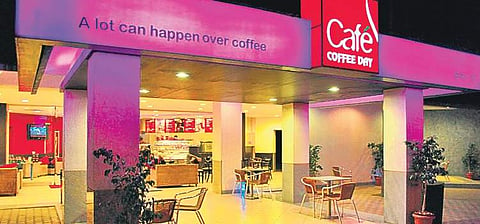

It's hard to ascertain what would brew up in life, next. Who would have thought that a coffee baron's body would be fished out of river decades after he made us believe: 'yes, a lot can happen over a cup of coffee!' Son of a coffee plantation owner, VG Siddharta had transformed the beverage culture of the land. Even before foreign brands penetrated Indian markets, the Cafe Coffee Day (CCD) founder offered an alternative to the tea-drinking youngsters in early 2000s. Be it for attending matrimonial interviews, taking in-between class breaks, using free internet, meeting the first-crush on a date or simply waiting for a friend, a visit to the CCDs were backed by so many reasons. CCD has also been close to the hearts of Bhubaneswarites.
Finding a place to sit at the Café Coffee Day (CCD) outlet near Ram Mandir Square even today is all about luck. But that comes as no surprise to many. As the first CCD outlet in Bhubaneswar to come around the early 2000s, it has managed to amass a fan base that many cafes could only dream of. But then it is CCD we are talking about – the place that transformed how the city socialized by just
bringing people together over coffee.
And delicious memories, recalls Sophia Simon of Detour Odisha. “I still remember when the outlet opened, It was a rage. Even though it was expensive for the pocket money we got, the trip always left us vying for the next one and we would sincerely save for the same, “says Simon, who even today conducts most of her work meetings in the familiar easiness of a CCD.
There is something home-like of CCD, adds social entrepreneur Abhijit Patnaik, who drives to the outlet near XIMB occasionally now for the signature hazelnut latte and the smiling face of the baristas at the outlet. “It would be like coming to a friend’s place who knew how you liked your coffee and would serve you exactly the same,” says the no-plastic campaigner, who began using the outlet as a
co-working space long before the term became a trend in the city.
Says artist Veejayant Dash, “It was easy to fall in love with this informal place. You could just come in, find your spot, order a coffee and sit around for long hours lost in your thoughts, doodling and watching the world pass by.” For Dash, it was here that the paint campaign took shape in the early side of
2004, when he met a group of artists who thought likewise. Today that zeal to give the city an artistic facelift has become a showcase of Smart City.
Such was the success of CCD at creating this easy “hangout space” that not only home brands decided to share space with the brand – SilverSteak being one of the them – but even brands like Ginger opened with CCD as part of their offering. Did the gamble pay? More than what brands today would like to give credit for.
CCD, in fact, says seasoned hotelier Ravi Mahapatra, “did more than just create this (safe) oasis for a city that parched under the dearth of good, easy on the pocket places, it was a format that even the older generation was charmed by. You could walk in and hear laughter, see smile and have this great aroma
wafting through: A much-needed face up for a capital on the verge of being Smart City.
Agrees special educator, Monalisa Kar, “I remember taking my mum for her first coffee to a CCD in Surya Nagar. The prices of coffee had gone up, and for my money sensitive parent it would be a clear case of ‘ we don’t need.’” Kar who has been a loyalist of the brand, especially the chocolate fantasy pastry, was surprised at what happened next.
She says, “my mother walked in, refused a coffee and insisted on sharing a Café Frappe. But the smiling barista served her one nevertheless, which was finished on the table with two scoops of icecream and a dollop of cream and some chocolate sauce. Before leaving he said, ‘if you don’t like it, the bill is on me.’ Needless to say, my mum makes a trip once every month to chat with the barista and of course for her double scoop Café Frappe.”
In the brand’s little less than two decades long existence, the brand has seen the city grow, flourish, fleet with cafes that did their own take on coffee, cookies and cakes and yet the charm continues. The reason isn’t just the memories and the flush of familiar faces of the baristas or the build-to-taste coffees that it doles out 365 days a year, 16 hours a day. It is, says seasoned marketing professional and coffee aficionado Ritwik Mishra, “a combination of all. Here is a space that allowed you to truly let your hair down, not be judged and yet have a good time.”
CCD was (and is), ends Mahapatra, “to modern Odisha was what Parsi Café to Mumbai: the perfect place to hang out.”
(Madhulika Dash is a food writer and columnist)